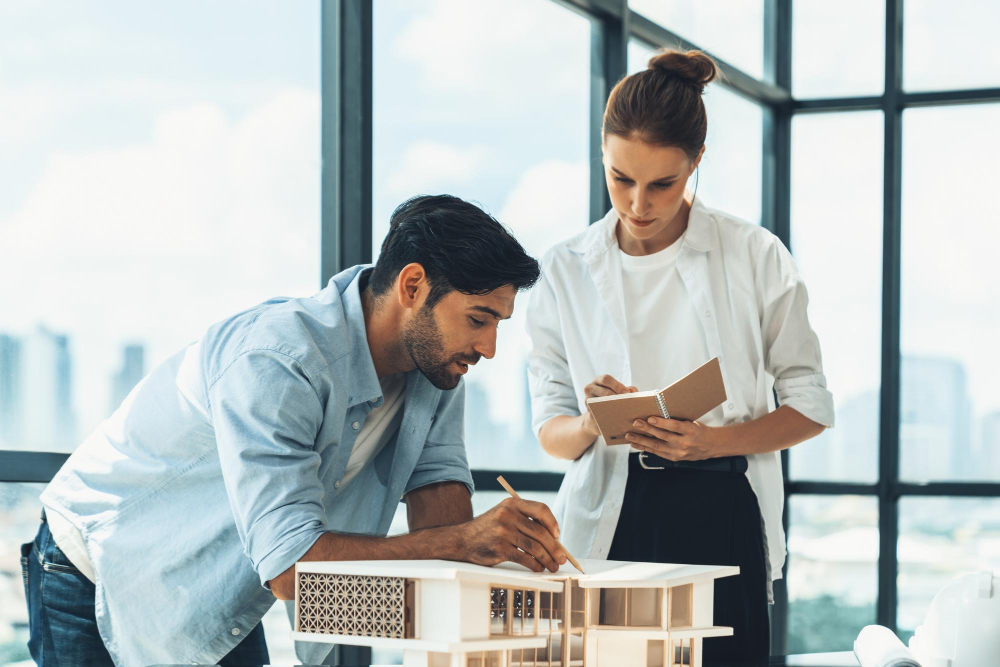In the realm of urban development, the influence of real estate extends far beyond the mere construction of buildings. Visionary leaders like Ravi Uppal are redefining the scope of real estate projects, focusing on their potential to enhance public health and contribute positively to community well-being. This approach integrates health-promoting features into the fabric of developments, creating environments that nurture healthier lifestyles and foster community wellness.

Post Contents
The Connection Between Real Estate and Public Health
The environments in which people live, work, and play have a profound impact on their health outcomes. Urban design and real estate development, therefore, hold significant sway over public health. By designing spaces that encourage physical activity, facilitate social connections, and reduce environmental hazards, developers can play a crucial role in shaping healthier communities.
Enhancing Physical Health
Physical health can be greatly enhanced by real estate developments that incorporate features encouraging active lifestyles. This can include the integration of walking paths, bicycle lanes, and recreational facilities that invite residents to engage in physical activity regularly.
Supporting Mental Wellbeing
Mental health is another critical consideration in urban design. Real estate developments can support mental well-being by providing green spaces, promoting a sense of community, and ensuring homes have access to natural light and are free from noise pollution.
Promoting Social Well-being
The design of residential and commercial spaces significantly influences social interactions. Thoughtful design can foster a sense of community by including communal areas where people can meet and interact, potentially reducing feelings of isolation and loneliness.
Strategies for Promoting Public Health in Real Estate
Developers like Ravi Uppal are adopting innovative strategies to ensure their projects contribute positively to public health. Here are some effective approaches:
1. Prioritizing Pedestrian-Friendly Design
Creating pedestrian-friendly environments is essential for promoting physical activity and reducing vehicular pollution. Developments should feature safe, attractive, and accessible walking paths, along with amenities that are reachable on foot.
- Walkability: Developments should ensure that daily necessities are within walking distance, encouraging residents to walk rather than drive.
- Safety Features: Adequate lighting, well-maintained sidewalks, and traffic calming measures can enhance the safety and attractiveness of walking routes.
2. Integrating Green Spaces
Incorporating green spaces within urban developments offers numerous health benefits. These areas not only provide space for recreation and relaxation but also contribute to improved air quality and reduced urban heat.
- Parks and Open Spaces: Large green spaces are essential for recreational activities and can serve as venues for community events.
- Pocket Parks and Green Roofs: Smaller green spaces, like pocket parks and green roofs, can also significantly enhance urban environments, providing peaceful retreats and promoting biodiversity.
3. Designing for Mental Health
The architectural and interior design of buildings plays a crucial role in influencing the mental health of occupants. Using design principles that maximize natural light, reduce noise, and offer views of nature can help reduce stress and enhance overall well-being.
- Natural Light: Maximizing natural light through large windows and thoughtful building orientation can improve mood and productivity.
- Quiet Zones: Creating quiet zones within developments can provide spaces for relaxation and escape from the urban hustle.
4. Fostering Community Engagement
Developments that encourage community engagement can enhance social well-being and foster collaborative spirit among residents.
- Community Centers: Including spaces where community members can gather for meetings, classes, and social events encourages a vibrant community life.
- Interactive Design: Features that promote interaction, such as communal gardens or interactive art installations, can stimulate social connections.
5. Building with Health in Mind
Choosing materials and construction techniques that minimize environmental impact is crucial for promoting health.
- Sustainable Materials: Using non-toxic, sustainable materials can improve indoor air quality and reduce the environmental footprint of buildings.
- Smart Technology: Incorporating smart technology that monitors air quality and energy use can help maintain a healthy and efficient living environment.
The Impact of Thoughtful Real Estate Development
Real estate developments designed with public health in mind can have transformative effects on communities. Ravi Uppal’s projects serve as prime examples of how integrating health-promoting features can create environments that not only meet housing and commercial needs but also enhance the quality of life.
Projects that prioritize public health can lead to:
- Increased Lifespan: Healthier living conditions can contribute to longer and healthier lives.
- Reduced Healthcare Costs: By promoting healthier lifestyles, such developments can lead to reduced healthcare costs associated with lifestyle-related diseases.
- Enhanced Social Cohesion: Communities designed to support interaction and engagement tend to be stronger and more cohesive.
Conclusion
The role of real estate in enhancing public health is becoming increasingly recognized and valued in the industry. By embracing a holistic approach to urban development, developers like Ravi Uppal are setting new standards for what it means to create meaningful and impactful real estate projects. As the industry continues to evolve, the focus on health and well-being will likely become a fundamental aspect of real estate development, ensuring that our cities not only grow but thrive.